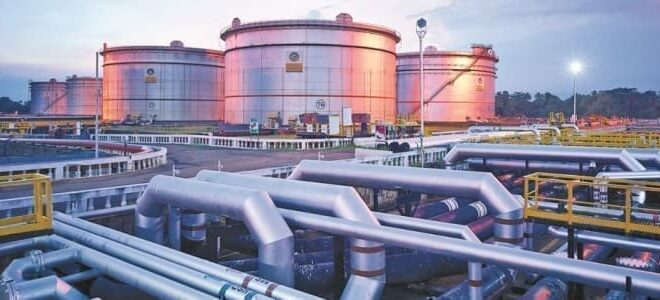India’s role in global oil markets will likely expand substantially over the remainder of the decade, fueled by strong growth in its economy, population and demographics — making the country the largest source of demand growth, the International Energy Agency said in a report Feb. 7.
n the report titled “Indian Oil Market — Outlook to 2030”, IEA said the global energy crisis had cast energy security as a key political priority for countries across the world and it is critically imperative for India given its increased dependence on oil imports for domestic requirements.
“India will become the largest source of global oil demand growth between now and 2030, while growth in developed economies and China initially slows and then subsequently goes into reverse in our outlook,” according to the report, released on the sidelines of the India Energy Week in Goa.
Widespread industrial expansion would mean that gasoil would become the single largest source of oil demand growth, accounting for nearly half of the rise in the nation’s demand and more than one-sixth of total global oil demand growth through to 2030, the report said.
Jet-kerosene demand is poised to grow strongly, at around 5.9% per year on an average, but from a low base compared to other countries. Gasoline will grow by 0.7% on an average, as the electrification of India’s vehicle fleet avoids a more substantial rise, it added.
Refining sector holds promise
Indian oil companies are investing heavily in the refining sector to meet the rise in domestic oil demand. Over the next seven years, 1 million b/d of new refinery distillation capacity will be added – more than any other country in the world outside of China.
Several other large projects are currently under consideration that may lift refining capacity beyond the 6.8 million b/d capacity that IEA expects so far.
“India is set to maintain its position as a key exporter of transportation fuels to markets in Asia and the Atlantic Basin. Continued investment in refining capacity and complexity will boost light and middle distillate production, even as the industry pivots further towards heavier and more sour crudes,” the report said.
As a relatively small oil producer, and with limited potential for near-term growth, India’s domestic production accounted for just 13% of the country’s supply needs. In 2023, domestic oil production averaged at around 700,000 b/d.
“Despite renewed efforts by the government to attract foreign upstream investment, domestic crude oil production is expected to see continued declines over the medium term. A dearth of new discoveries in recent years will contribute to Indian oil supply falling to 540,000 b/d by 2030,” as per the report.
India’s efforts to accelerate its energy transition is set to deliver significant oil savings in the forecast period. Increased uptake in electric vehicles is poised to play a key role in decarbonizing the transport sector.
“We estimate that, combined, new EVs and energy efficiency improvements will avoid 480,000 b/d of extra oil demand in the 2023-2030 period,” the report added.
Biofuels footprint
Biofuels are also expected to play a key role in India’s decarbonization of the transport sector. The South Asian nation is already the world’s third-largest producer and consumer of ethanol, as domestic production has tripled over the last five years. Supported by the country’s abundant feedstocks, political support and effective policy implementation, its ethanol blending rate of around 12% is amongst the world’s highest.
“India has advanced by five years its deadline for doubling nationwide ethanol blending in gasoline to 20% in Q4 2026. Achieving 20% ethanol blending in such a short time frame presents several challenges, not least rapidly expanding feedstock supplies,” the report said.
The country’s economic growth story would bring challenges for its security of energy supplies. India was already the world’s second-largest crude oil net importer in 2023, having boosted imports by 36% over the past decade to 4.6 million b/d to meet rising refinery intake. Increased refining processing will lift crude oil imports further to 5.8 million b/d by 2030, with major implications for India’s supply security.
“The energy crisis and recent surge in long-haul crude sources, notably from Russia, has also added further impetus to sustaining the country’s oil resilience in case of market disruptions.
“India needs to enhance its capacity to respond to possible oil supply disruptions by implementing and strengthening its strategic petroleum reserve program and improving oil industry readiness,” the report said.

 Iran Energy News Oil, Gas, Petrochemical and Energy Field Specialized Channel
Iran Energy News Oil, Gas, Petrochemical and Energy Field Specialized Channel



